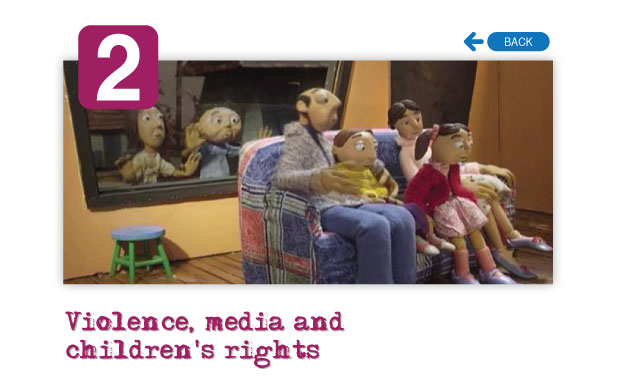| |
After 20 years of adoption of the Convention on the Rights of the Child (CRC), and the many advances that it have brought, the Inter-American Children’s Institute notes with concern that violence against children and adolescents continues being one of the main expressions of violation of their rights.
Child violence has many manifestations and forms, which have found in media and emerging technologies new forms of massification and propagation.
The approach to the topic by the mass media for the IIN is of increasing relevance and importance because of the power they have in the process of socialization, in the construction of social representations of children and adolescents and in building citizenship, including children and adolescents. Today, such power exceeds in many societies that associated to traditionally known instances for their great training potential, such as family, school and community.
Therefore, we consider essential to further investigate the mechanisms that link media and new technologies with the proliferation of practices that can be treated as violence or the increase of conditions that violate the rights of children and adolescents.
The ability of the media today to promote a contextual, pluralistic and public debate around policies that provide support for the promotion, guarantee and defense of the rights of children and adolescents is not limited to placing items on the agenda of the media. This ability is also expressed, although it sounds paradoxical, in what it does not express, that means, in passiveness, permissiveness and lack of control over violent daily practices that for their cultural characterization or other find support in the habits of citizenship. It is "naturalization" or "legitimacy" of these forms of violence that contribute to the perpetuation and entrenchment in the population.
Since its formulation, the Convention on the Rights of the Child set general principles for the implementation of public policies in the field of communications (in particular article 17) and for states to place emphasis on these issues. Considering the development of new technologies and forms of communication we must think about how they can be used in prevention, promotion and creation of a nonviolence culture and how to address those expressions and patterns that find in the media veins that violate the rights of children and adolescents.
The Convention has been a fundamental contribution for the understanding of children and adolescents as subjects of rights. After 20 years, we renew our commitment and dedication to this process of construction and monitoring of public policies on children and adolescents, and the particular concern to place them high on the priority list of the public agenda of discussions.
Interesting articles and experiences in the region:
- The State of the World’s of Children. Special Edition. Celebrating 20 years of the Convention on the Rights of the Chile. Unicef. 2009. View article
- World Report on Violence against Children. United Nations. Paulo Sérgio Pinheiro. 2006. View article
- Enlace a video contra la violencia del IIN (only in Spanish). View movie
- Medios y Violencia. La cobertura de la violencia contra niños, niñas y adolescentes en los medios de comunicación latinoamericanos. Red Andi. 2006 (only in Spanish). View article
- Infancia y violencia en medios de comunicación. Aproximación a un aspecto de la educación informal. María Montserrat Pérez Contreras. Boletín Mexicano de derecho comparado. UNAM. 2007(only in Spanish). View article
- Bullying, El Terror Escolar. UNICEF – MTV Networks. 2007(only in Spanish)
View article
|
|

